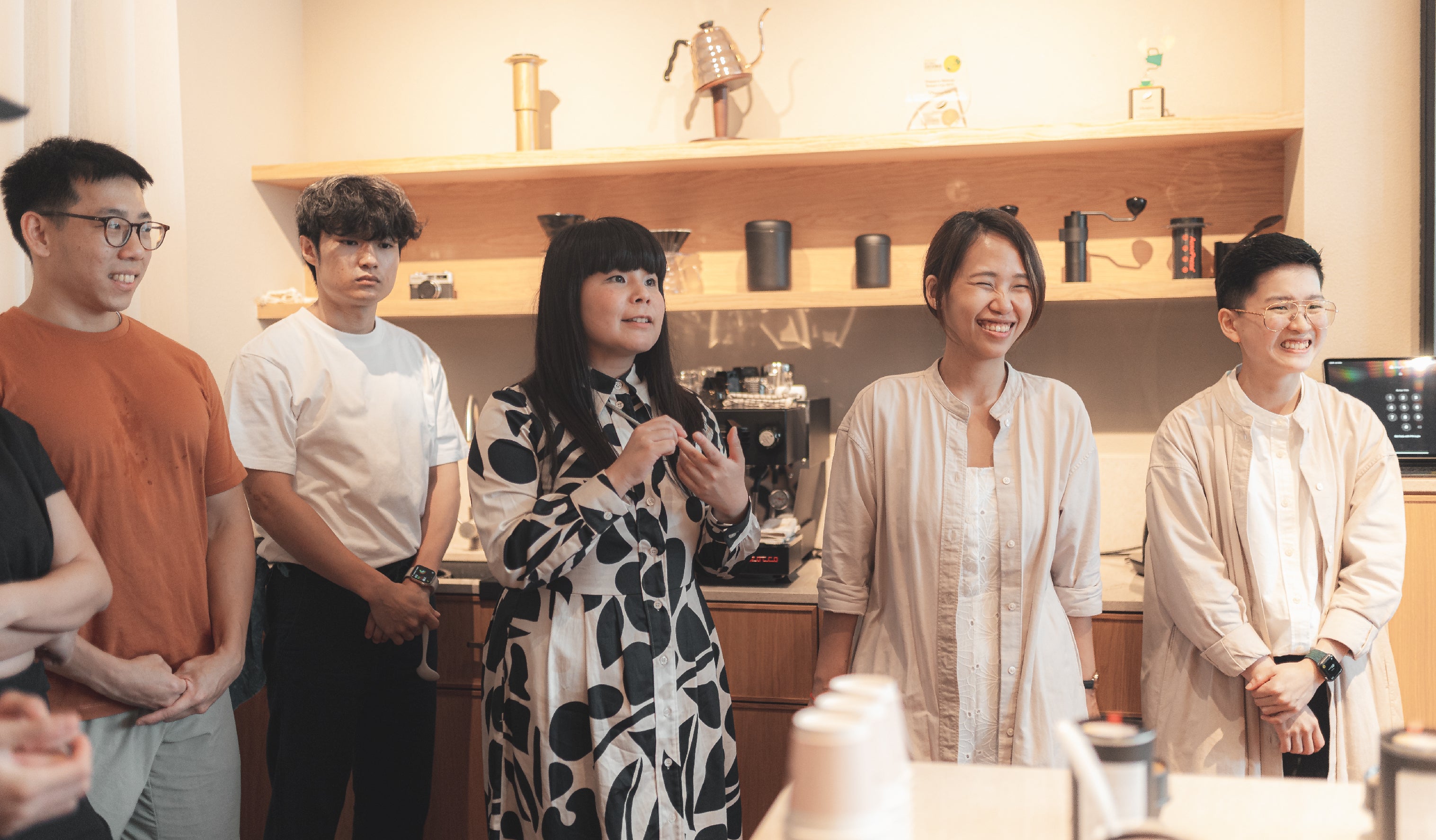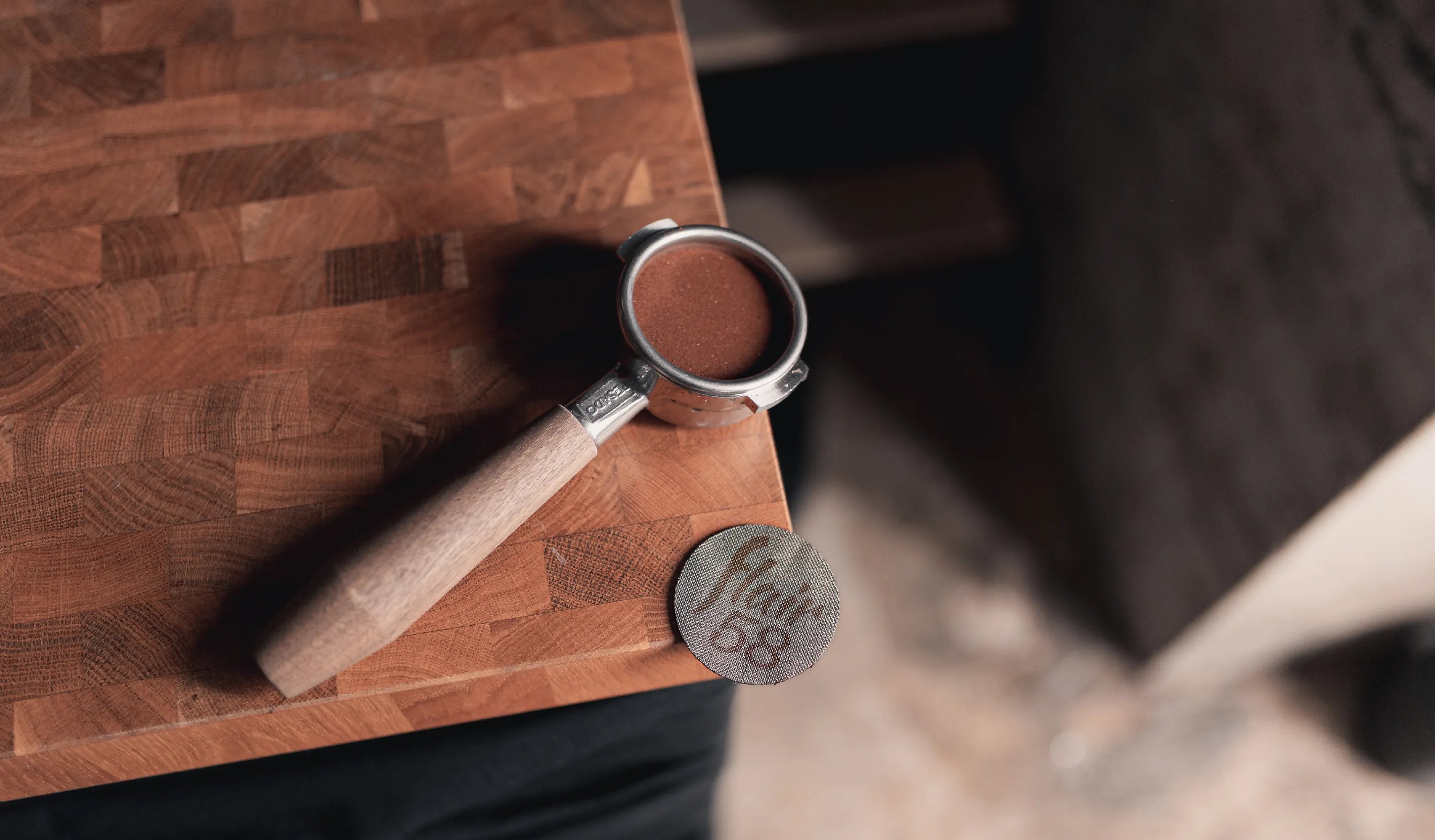Rarely seen in commercial cafés, but a longstanding crowd favourite among home baristas, the benefits of a puck screen are underrated at its best, and often not clearly known to many baristas who may have not used it before. As an introduction, a puck screen is a metal mesh that comes in various thicknesses and types, but all of them primarily serve the purpose of being placed above the tamped espresso in a portafilter prior to extraction.Generally, a puck screen has the following benefits:
- Even extraction, as water from the shower screen is dispersed evenly across the entire puck, reducing incidences of channelling during espresso extraction.
- Cleaner workflows, by acting as a layer between the shower screen of the group head and the espresso puck itself, preventing coffee grounds from catching onto the shower screen.
- Drier pucks and cleaner baskets, which are less messy and easily knocked out of the portafilter.
- Increased extraction yields and ability to go slightly coarser on the grind size.

Different Puck Screens
Since the uptick in popularity of puck screens, these accessories are increasingly common, and can be found in various brands and types. These fundamentally differ in thickness and mesh type, and choosing the right one is a matter of preference and familiarity.
Puck screens are most often found with a thickness of 1.7mm, although they are also commonly found in 0.2mm, 1.0mm and 2.0mm thicknesses. A thicker puck screen adds more resistance to the espresso puck, slowing down the espresso extraction and increasing extraction yields.
Mesh type also matters. The fineness of the puck screen meshes varies between 50µm, 100µm and 150µm, and in finer meshes, coffee grounds are unable to escape through the mesh, bringing about greater resistance in the espresso puck. Often, mesh type is related to thickness – thicker meshes potentially mean more layers of mesh in the puck screen, and therefore a finer mesh type!
On Workflow and Extraction
One big advantage of the puck screen is its convenience in adaptation.
It is a straightforward process to use puck screens – just insert the puck screen after the espresso has been tamped in the portafilter, taking note to slide it gently on top of the puck, and extract the coffee as one normally would.
In the case of home use, wherein the espresso machine is used to pull a few shots split over the course of the day, having one or two puck screens for use is highly invaluable. More than anything else, the cleanliness that comes with using a puck screen, both the spent espresso grounds in the portafilter basket, as well as the shower screen, make this additional step a worthwhile endeavour that most home baristas swear by.

Yet, while puck screens are a great addition to the home brewing setup for the simplicity and cleanliness it provides to the workflow, it might be less ideal in the case of café operation, for the fact that it requires time to reset after each shot – puck screens need to be washed, and ideally dried, before being used again.
During commercial service, where there is a constant churning of espresso shots for customer orders, the sheer number of puck screens that may be required to ensure smooth flow of operations may cause it to be an infeasible implementation.
In terms of espresso extraction with a puck screen, it is important to account for the additional thermal mass that one is adding to the espresso puck. Puck screens absorb some of the heat from the hot water coming out of the shower screen, and it is important to increase the brewing temperature slightly to obtain similar extraction parameters to a coffee that is extracted without a puck screen.

The Effects of Puck Screens on Coffee
We have found that the espressos extracted with the puck screen often trend towards a higher extraction yield, a metric that many home brewers aspire towards, as there is an impression that higher extraction yields produce better tasting coffee.
However, the concept of extraction yield should be kept separate from that of a good tasting espresso. A good tasting espresso can exist at various levels of extraction yields, and it is more important to use our taste to guide the process of calibration.
Instead, the benefit of puck screens in espresso extraction is in the addition of resistance to the coffee puck. This allows us to grind coffees at slightly coarser grind sizes without needing to compensate in terms of resistance by increasing the dose or tamping harder, increasing the options available for calibration to produce the perfect cup of espresso!
Why Puck Screens?
Journal article by Homeground Coffee Roasters.
Journal Archive

Milk in World Barista Competitions
An overview of milk concentration methods in coffee competition, focusing on freezing techniques that enhance milk's qualities for great coffee beverages.

How Coffee Cup Colours Affect Your Drinking Experience
Cross-modal perception of colours on the taste of coffee

Learning to enjoy more

Same Coffees Everywhere, All at Once
Why do local specialty coffee shops serve the same coffees?

A study of unexpected coffee production nations

A low down on using puck screens for espresso machines

